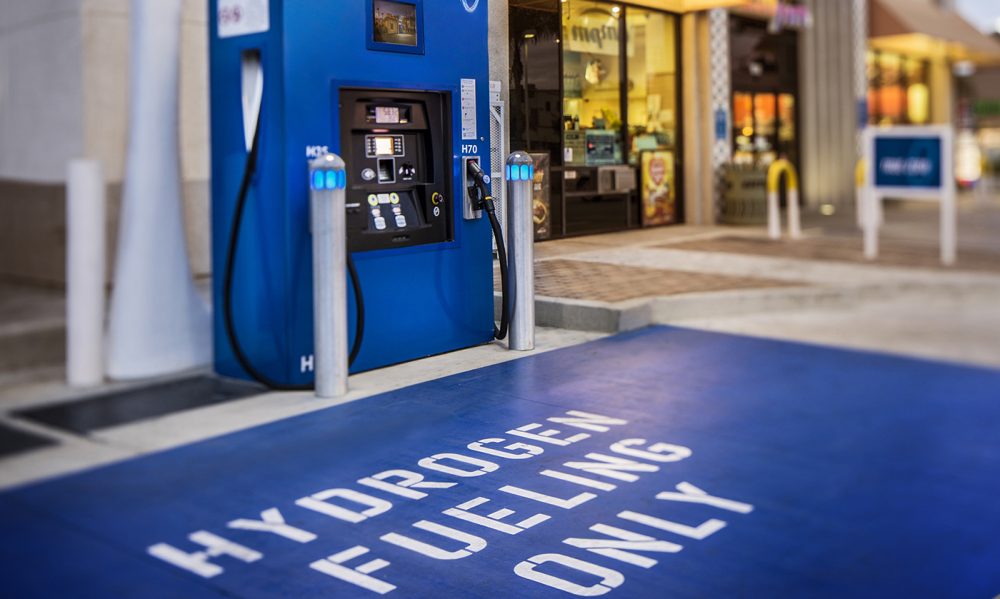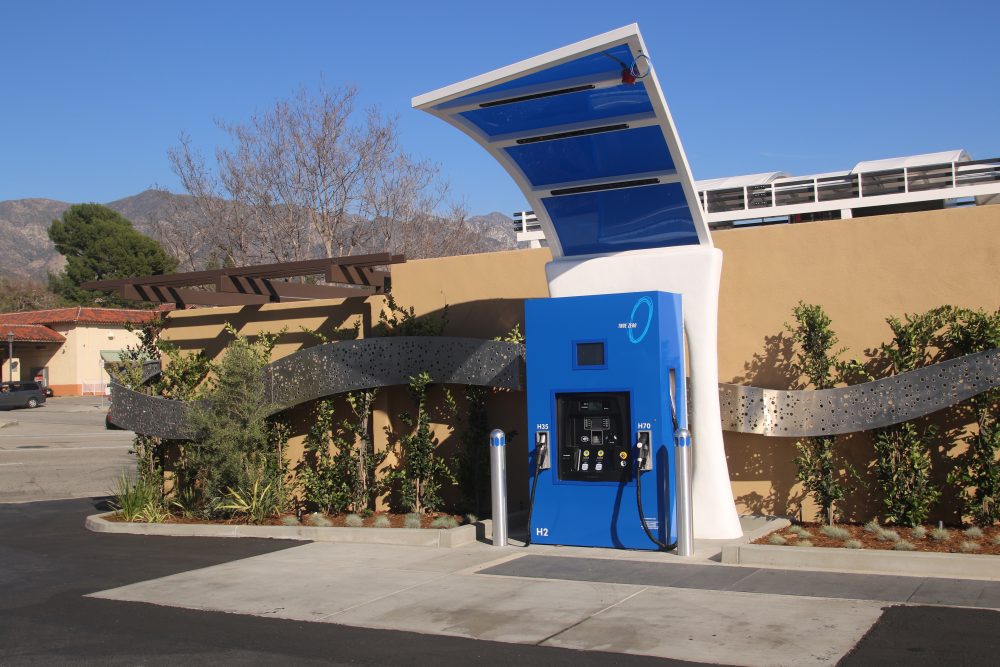First Element soon to open world’s largest hydrogen station for heavy trucks
First Element Fuel is planning to soon open its first heavy truck hydrogen fueling station at the Port of Oakland in California, which the company says will be the first of its kind in the world.
Shane Stephens, chief development officer and founder of First Element Fuel gave an update on the project and some of the challenges involved in building out hydrogen fueling stations for heavy trucks. To date, the company has focused on building smaller fueling stations for cars, a space in which it claims to be the leader. Now it has its sights on something bigger.

“One of the big learnings we’ve had to do over the last 10 years is learning how to scale up the size of a station,” Stephens said on a recent call with trucking journalists. Today’s California-based stations do about 1,500 kg of hydrogen a day in volume, filling passenger cars.
Truck filling stations will need to be 10 times larger to be economically viable.
“People claim to have heavy-duty stations out there,” Stephens said. “I would say those are maybe okay for pilot purposes, but they fall short of what you need in a real commercial setting for trucks. You need a station that can fill a truck in less than 10 minutes and you need a station that can fill 100 or 200 trucks a day – eventually, bigger than that…it doesn’t exist anywhere in the world.”
The truck filling station at the Port of Oakland will have a capacity of 15,000 kg a day, and will also be open to medium-duty and passenger vehicles as well as heavy trucks. The station is scheduled to open in by December. But being a pioneer in the hydrogen fueling space means there are still barriers to overcome.
Standards required
“For example, we have to establish weights and measures standards,” Stephens explained. “And we have to demonstrate that we actually are [providing] the volume of hydrogen that the dispenser says.” He adds, “Nobody’s ever confirmed a protocol for fast-fill on a truck, either. So, there are a couple of things that we’ll be pioneering for the first time.”
But the station at the Port of Oakland, Stephens said, can provide a template that can be rolled out across North America. The company has received funding to build another such station in Kettleman City, Calif., along the I-5 corridor between Los Angeles and San Francisco, which will be used by hydrogen-fueled longhaul trucks.
Hydrogen for these early stations will be trucked in, likely in liquid form due to its increased density. Cryopumping is used to fill the vehicles with hydrogen in gaseous form and cooler temperatures, allowing for fast fills.
“Cryopump basically enables you to take advantage of all that energy that you’ve put into liquefying the hydrogen upstream and therefore it simplifies your station in terms of the technology,” Stephens explained. “It also reduces your energy consumption.”
A 15,000-kg capacity station such as the one going in at the Port of Oakland will require about four truckloads of liquid hydrogen delivered each day and can fuel about 150 heavy trucks daily. Stephens said a truck filling station would need about 50 to 75 trucks a day to make it economically feasible.

Plans for Canada
While it seems counterproductive to deliver liquid hydrogen in tanks pulled by diesel-powered trucks, Stephens said First Element is in talks with Hyundai to bring on hydrogen trucks to deliver the fuel.
“The hydrogen supply chain, even if hauled by diesel, is way better than gasoline but of course it doesn’t paint the right picture or get you as far as you’d like to be if you’re hauling with diesel tractors,” Stephens acknowledged.
Asked if the company is eyeing station locations in Canada, Stephens said “We actually see some good opportunity there. There’s a history of support for hydrogen [in Canada]. I think we look at Canada a lot like we do Europe where, we have this technology platform now and we’re probably going to be looking for local partners in Canada where we can bring our know-how – kind of like a franchise almost – and work with a local partner so we could have a faster rollout than if we try to build an operation from the ground up.”
Eventually, Stephens anticipates longhaul trucking will consider storing hydrogen on-board the trucks in liquid form to get greater density and range. Both gaseous and liquid on-board storage have their advantages he said, noting liquid storage requires more complex tanks and can lose fuel due to evaporation if parked for long periods. Those challenges are offset by greater density and range when stored onboard the vehicle in liquid form, and losses due to evaporation are less concerning since the trucks are filled so frequently.
Have your say
This is a moderated forum. Comments will no longer be published unless they are accompanied by a first and last name and a verifiable email address. (Today's Trucking will not publish or share the email address.) Profane language and content deemed to be libelous, racist, or threatening in nature will not be published under any circumstances.
What an impressive station. 15.000 kg/day !!!
What kind of refuelling nozzle and protocol will you use to fuel the trucks?
Great article. What does the station cost, when is the official opening. We appreciate the clear communication from Shane Stephen’s, can you please be as clear on the messaging for the light duty stations!